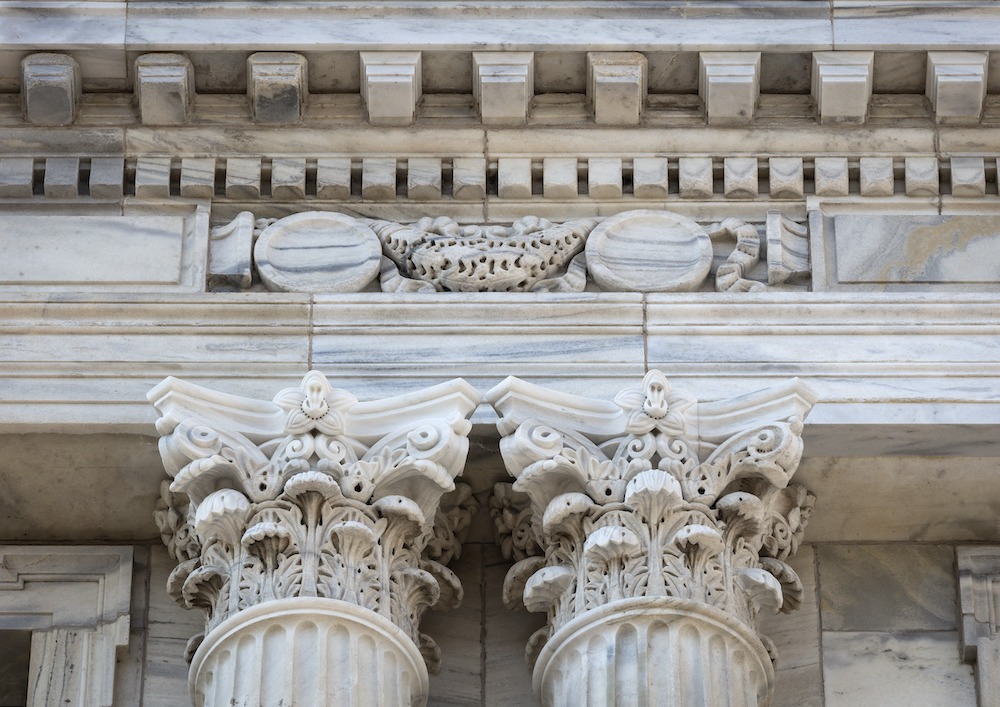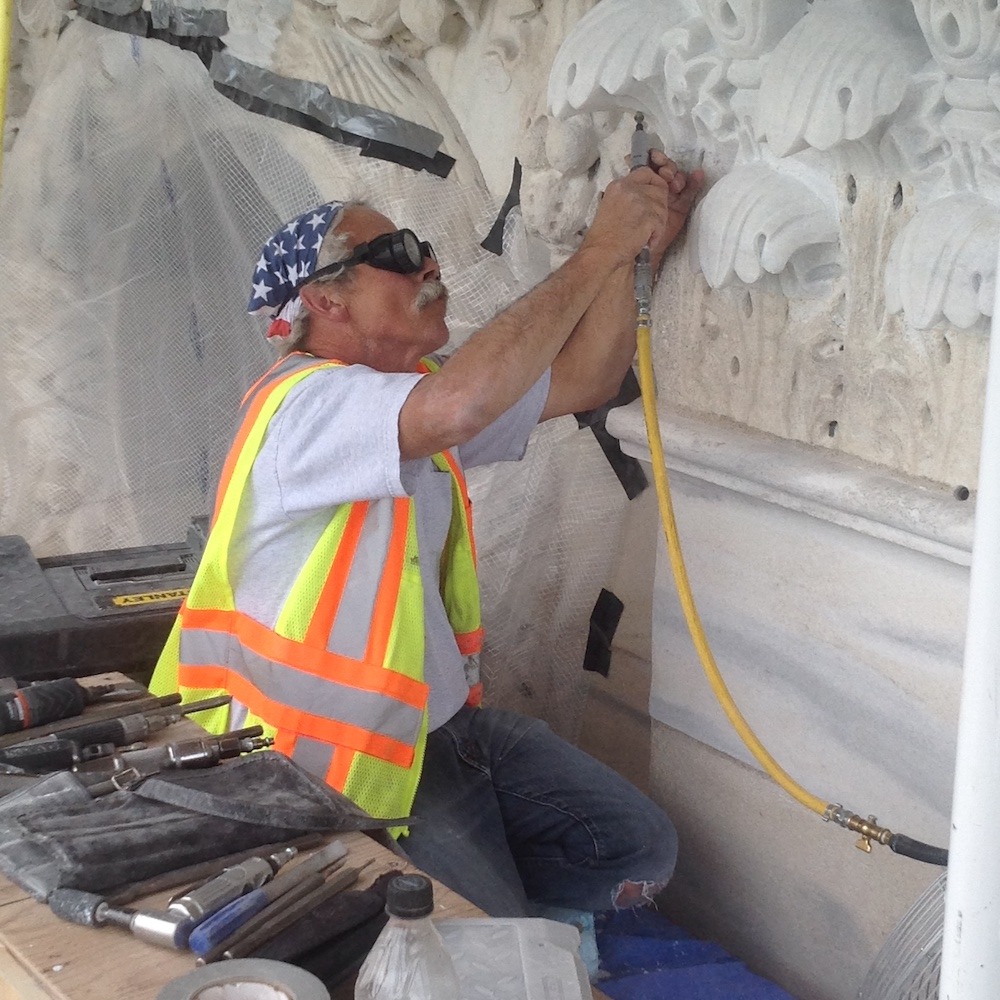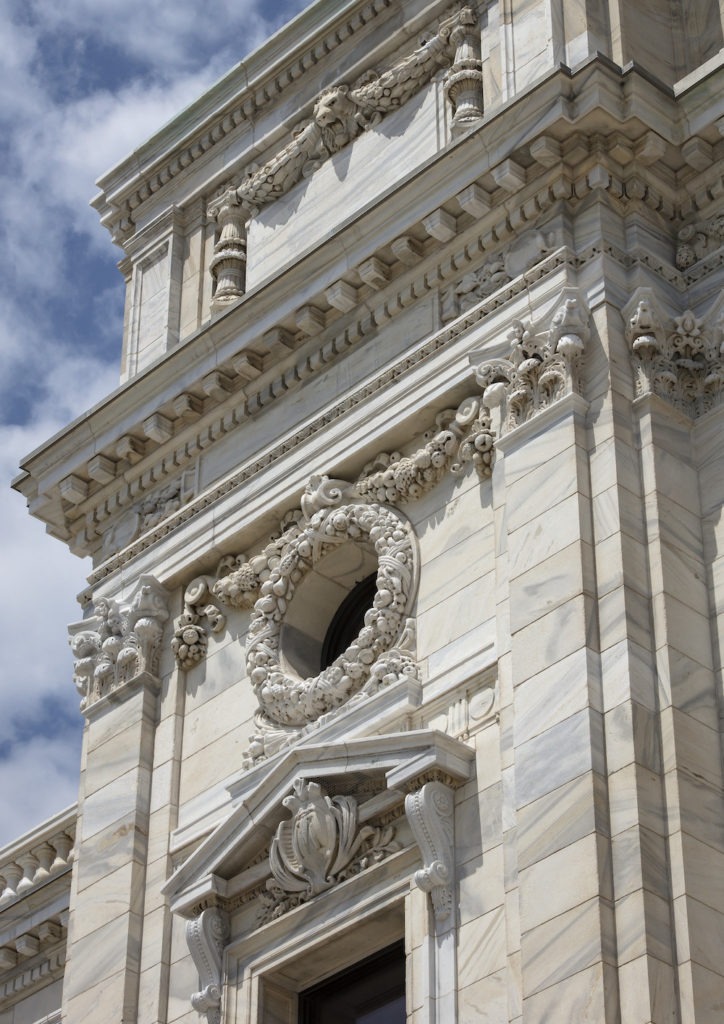Words:Nick Vaccaro
Photos: rruntsch, Paul Crosby
To determine when the Minnesota State Capitol building was constructed, one might have to first select which building. History reveals that the state now finds the use of its third actual building.
Completed in 1853, the first state capitol building fell victim to fire in 1881. The second building was constructed in 1883 and included two new wings with one on the Exchange Street side of the building and the other facing Wabasha Street. With progress comes growth and the building was later demolished due to inadequate size and poor ventilation. Responding to new demands, the state broke ground on the third and current building in 1896 and welcomed public entry in 1905.
Original Construction
Born from Cass Gilbert’s design, Butler-Ryan Construction built the modern-day work of art within 9 years. Displaying impressive features, the third capitol building received stone of a high grade. This was possible through extraction found at depths of 25 feet where a more uniform white color can be located.
The building consists of 42 stunningly fluted columns measuring 21’6” in height and 3’5” in diameter. Gaining the most attention, the building dome reigns as an actual 3 dome system. Constructed of self-supporting Georgia white marble panels, the outer dome spans 70’ across and stands 35’ tall. The middle dome gains structural support from its conical-shaped structure. This carries both the lantern and chandelier. Set at 54 degrees, the sloped steel columns measure 44’ in height. With its 60’ diameter, the inner dome is constructed with Guastavino tile and provides an interior substrate for finishes to be attached.
Crumbling Conditions
Led by HGA, a national architecture and engineering firm, the state capitol building underwent an assessment of its failing exterior systems. It was discovered that water had been infiltrating the stone cladding for an extended period. Cass Gilbert, however, had expected this and designed a gutter system. Located at the base of the middle dome, the system was intended to catch permeating water. The system proved inadequate as large quantities of water circumvented the gutter system and attacked the drum below. From that point, water traveled and wreaked havoc causing serious damage to the plastered finishes of the interior.
Additional exterior components were found to be compromised during preliminary observations. Column capital features, as well as window hood bracket scrolls, were found to be unstable. Initial damaged discovered served as a spotlight and provoked a more detailed series of observations.
“Once you become aware of the level of deterioration you look at the building differently,” said Ginny Lackovic, HGA Associate Vice and Preservation Specialist. “I started to notice signs of more advanced deterioration and we identified several areas of concern that could develop into potential life safety hazards.”

Lackovic and team determined that decorative carved stone and sculptural features were of the highest risk factor. Because they were located directly above the point where the public gained access to the building, the recommendation was wagered to provide overhead protection until a more detailed assessment could be rendered.
Assessing the Damage
Contracted to perform a hands-on evaluation of the building’s stone, Wiss, Janney, Elstner Associates, Inc. (WJE) utilized mechanical lifts and swing stage suspended scaffolding to gain access for inspections. Components discovered to be unstable were either removed or shored to ensure stabilization.
The evaluation phase offered the initial opportunity to assess the main building’s upper-level features. Light tapping allowed for easy removal of several fragments ranging from 10 to 15 pounds in size. Immediate stabilization, however, was initiated to secure a 150-pound pilaster veneer panel stationed above the accessible drive lane.

Comparing findings and studying data, WJE also sounded almost every piece of stone on the building. The data derived provided guidance for early on work direction projections.
Testing Strategies
Because of the increased size of the project scope and the level of repairs needed, a prioritization system was developed. As a result, the strategy was categorized as part of a tiered system:
- Tier 1: Life safety
- Tier 2: Water management/envelope integrity
- Tier 3: Character defining feature
- Tier 4: Aesthetic improvements
With such an extensive list of costly items needing attention, all repair strategies were tested to ensure success when performed. Test trials were conducted and reviewed under a diverse spectrum of considerations and scenarios.
“This allowed us to review results at various times of the day, in different ambient conditions,” said Lackovic. “It also allowed investigators to evaluate whether exposure to differential climate factors influenced the natural weathering process. The trials provided an invaluable opportunity to explore options, demonstrate installation procedures, test process, inform schedule, generate unit accurate pieces based on actual time and materials, and judge overall aesthetic impact ahead of time.”
Lackovic explained the trials were essential in devising project strategy and implementing a proactive action plan moving forward to successfully complete the work scope. This process helped to gauge what the team’s capabilities included.

“The trials were amazing,” said Lackovic. “It set the standard for quality and allowed us to see what the masons were capable of. It allowed us to get some unit prices together so that we could help.”
Upon completion of the trials, the team compiled the results in a narrative report and submitted it to the state. Repair strategies and unit prices were established. The project was approved based on the number of repairs that could be executed within a given period with scaffolding available.
Construction Commencement
Prior to beginning the work, preliminary construction estimates were reviewed and compared to project projections and the target budget. Great consideration was given to the financial and integral management of all stages of the project.
Before scaffolding was erected, stone suppliers sent their crews to the building to measure and template features. These measurements would later serve as the basis for shop tickets. All work was carefully monitored. Demolition, fabrication, and installation were all scrutinized to ensure the highest standard possible in quality.
More specifically, all work was reviewed at each phase, after final field blending, and then at the review of the punch list. From the beginning to the end of the project, project investigators evaluated every piece of stone between eight to twelve times.

Remaining true to the original design of the building, the team located the only source available for Georgia white marble. Found within the same geological belt, this new source was rooted one mile north of the original quarry that had previously shut down.
Construction included a vast area needing attention. 30,000 pieces of stone needed varying levels of repair. These repairs were addressed in a 5-phase process that spanned over 4.5 years. 91 Dutchman repairs were made with other cracks being repaired, general cleaning taking place, along with blending, carving, and surface redressing taking place.
Success Through Teamwork
Due to its size and stature, the Minnesota State Capitol Building project was both complex and diverse. The team enlisted to see it to the end would mature to include fabricators and stonemasons from six states and three countries. While HGA served as the executive architect and WJE provided technical consulting services, additional entities also made up the team.
JE Dunn was contracted as the General Contractor while Twin City Tile and Marble Company, Mark-1 Restoration Company, and Advanced Masonry Restoration provided mason subcontractor services. Stone fabricators included Traditional Cut Stone, Paulo Costa, and Sons, Cutting Edge Stone, Tennessee Marble Company, and Art Cubus International. Polycor Inc. supplied stone. As an additional source, Italmarble Pocai SRL, a European stone broker, was also sourced for needed materials.

Final Thoughts
While the Minnesota State Capitol building restoration project was massive in size and demanding in schedule, the outcome exemplifies the professionalism and artistry that was put forth to accomplish a successful completion. Nearly 4000 pieces of stone were fabricated for the restoration project alone. This includes 828 tons of full-sized blocks.
With high dollar ticket items, the project experienced less than a 1 percent rejection rate, proving remarkable in its own rite. Priced at $800,000 per year, the scaffolding cost steered the project.
Matching the detail of the stone and the superior abilities of the masons who performed the work, the stone restoration of the project completed at $59,273, 295.00. With grand quantities of labor and experience not held by many, the final completion cost only personifies what was initiated and harnessed to successfully create greatness and remain true to a design both historical and legendary.
With a professional accomplishment of such magnitude comes personal reward. It is only natural with a time duration of such length that personal relationships are forged only adding to the quality of the final product.

“We had hundreds and hundreds of people who worked on this project, both at HGA and through the construction and trades,” said Lackovic. “And so, you live with them for all this time, they become your family. And on a project like this, where everybody is so committed and gives 110 percent of their passion and energy, it’s a privilege to work on these buildings.”













